Which Trabsformers Cartoon Continues From Bay Universe
You thought it was a giant toy commercial, and it was. But there was more than meets the eye…especially if you were in the target audience.
By Jason Hink
Endless war, brainwashing, the surveillance state…it sounds like Orwell's 1984. But when I was eight years old, I lived through something just as terrifying – the real 1984! As it turned out, it was only terrifying if you were an adult, helplessly spectating as evil corporations engineered the greatest propaganda machine with the most heinous ends imaginable – persuading your children to purchase toys based on cartoons they watched on TV.
And let me tell ya, the corporations won that battle, thank god!
The Transformers wasn't the first toy line to get a weekday, Monday-through-Friday syndicated time slot on stations across the country; Sunbow Productions stablemate G.I. Joe: A Real American Hero beat them to the punch, along with the first unabashed success of the model, Filmation's He-Man and the Masters of the Universe, which set the stage for daily episodic comic-books-come-to-life adventure that earlier generations had to settle for once a week, on Saturday mornings. Now, we still had our Saturday morning cartoons too, but during that agonizing 6-day wait we were treated to an ever-growing lineup of colorful, adventurous, quality storytelling that allowed our imaginations to run wild (if we had enough energy after sprinting home from school to catch them in the afternoon).
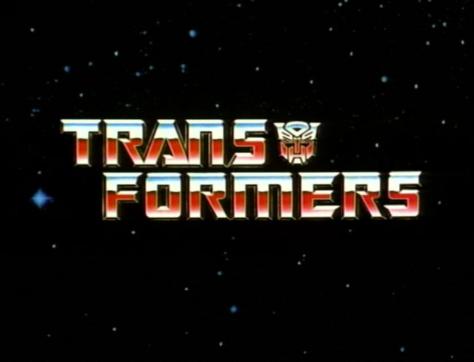
I wanted to revisit the childhood toons I grew up with and decided to start with The Transformers, not because it was the first of the '80s syndicated toy-based cartoons or that I liked it better than G.I. Joe: A Real American Hero or He-Man and the Masters of the Universe, but as a franchise, it somehow has the strongest legs, and I'm not just talking about the six (six!?! and counting) live action Michael Bay films; when was there ever a time that a Transformers series wasn't airing on TV? I only saw the first, original 1984-1987 series (commonly referred to by fans as G1, or Generation 1), when I was aged 8 to 11 – the perfect time to have seen this series and right smack in the middle of Hasbro's target audience. With nostalgia now eating away at me, I'm giving it another look, an adult screening, if you will, to see if I still enjoy it today.
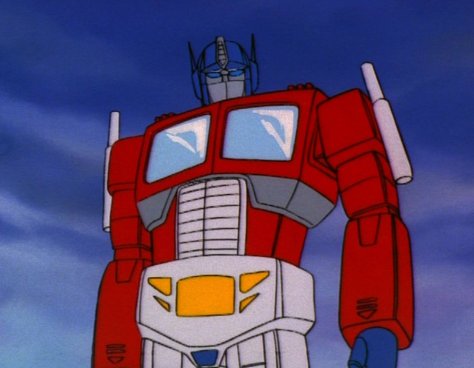
The Transformers depicts a battle of sentient robot factions who have crash-landed on Earth, taking the form of Earth vehicles in their "transformed" state in order to blend in to their surroundings (as cars, trucks, planes, guns, cameras, stereos, etc.) for camouflage. The Autobots, led by the heroic Optimus Prime, are the good guys while the evil Decepticons are led by the fearless Megatron. Stuck on Earth, the Autobots must protect the planet and humankind from the Decepticons, whose sole aim is to rob the planet of its natural resources and convert it into "energon," the energy form used on their home planet of Cybertron. With enough energon, the Decepticons plan to travel back through space and destroy the remaining Autobots on Cybertron, ultimately reigning supreme.

With Kenner holding the rights to make Star Wars toys and He-Man and the Masters of the Universe figures ("Don't call them dolls!" us 80s boys proclaimed) flying off the shelves for Mattel, Hasbro got back into the action-figure business in a big way in 1982 by resurrecting its old 60s G.I. Joe franchise and creating a new, 80s-centric anti-terrorist team with G.I. Joe: A Real American Hero, which played heavily on newly-revived pro-American, patriotic sentiment (Reagan!). It was a smash hit, spawning a daily syndicated series co-produced by Sunbow Productions and Marvel, and distributed by Claster Television, the Baltimore-based outfit that began life as the producer of the children's show Romper Room in the 1950s. After a couple years of watching G.I. Joe kill its TV competition and sell truckloads of toys, Hasbro was hungry to duplicate its success.
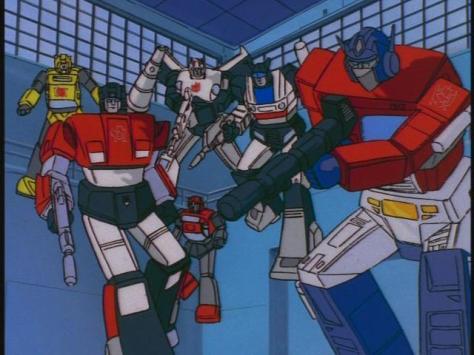
I'm not sure I fully understand how it came to be, but it's something like this: Following a long, convoluted trail of inspiration and hand-me-down, re-purposed designs, The Transformers toy line eventually took shape when Hasbro liked what they saw in Japanese toy lines featuring cars that transformed into robots and vice versa, namely the Diaclone and MicroChange lines.
RELATED | More animation reviews & articles
The toys were cool, but when those Japanese toy makers displayed them at toy shows, they seemed like nothing more than fancy puzzles, like a Rubik's Cube shaped like a car or an airplane. The American company saw a way to exploit this: By licensing the Diaclone and MicroChange toy lines, creating a backstory and giving each character a unique personality, they could market the entire lot without spending all that research and development dough – the toys were already made! So for American kids, two similar but disparate toy lines known in Japan as Diaclone and MicroChange became The Transformers, with Hasbro partnering with Japanese toymaker Takara.
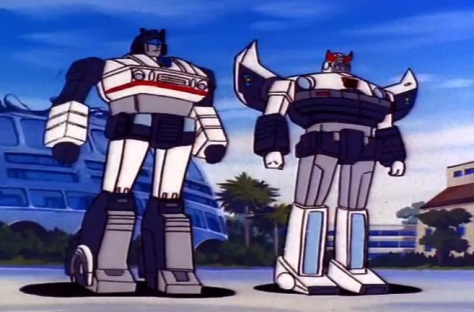
As with their previous success, G.I. Joe, Hasbro commissioned a Marvel comic book for The Transformers and, using the same playbook, hired Sunbow (which initially produced 30-second cartoon toy commercials for both lines) to produce a full fledged television series. But, contrary to what many believe (and contrary to my hazy, decades-old memories), The Transformers didn't begin as a weekday, Monday-through-Friday cartoon.

Premiering in the fall of 1984, The Transformers syndicated as a weekly, Saturday-morning series, just like its old-school network counterparts. But this only happened after a 3-part miniseries aired, Monday through Wednesday, on September 17, 18 and 19 of that year. After a break of a couple weeks, the first proper episode aired on Saturday, October 6. One might think the producers were gauging the performance of the 3-part miniseries before committing to a full season, but production on season 1 had already been underway simultaneously with the miniseries. 13 episodes were commissioned, just like the The Big Three's (ABC, CBS, NBC) typical Saturday morning orders.

Now, I can't remember if I saw this first season of The Transformers as it originally aired in its initial weekly Saturday-morning format (my guess is I didn't see it until the 49-episode second season began airing daily, bringing the total episode count to 65, mirroring G.I. Joe's and He-Man's output). If I recall correctly, I watched it on Chicago superstation WGN, which was syndicated via stations and cable systems across the country, leading me to believe that Tribune-owned-or-affiliated stations made up a large chunk of where Sunbow-produced shows aired (along with G.I. Joe and Transformers, Sunbow's female-targeted Jem would follow the same model a year later). So, with The Transformers airing on cable via WGN in my West Coast (Pacific Standard) time zone, those Saturday morning episodes may have aired early in Chicago time, making them even earlier out west, contributing to my having no memory of seeing it on Saturdays (it aired during the 1 p.m. hour in my time zone when it switched to weekdays, if memory serves).
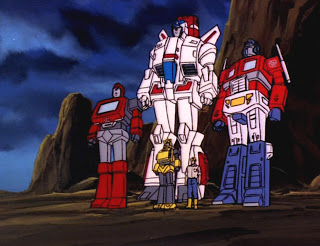
But enough with nostalgic memories of where I was and when…what about these first 16 episodes (the 3-part miniseries and 13 weekly outings)? Watching via Shout! Factory's season 1 DVD release, a certain repetitiveness can set in if binging the material, but taken in its properly viewed context, as weekly (or at least daily) episodes, it holds up just fine as natural successors of children's pulp entertainment popularized on Saturday mornings for decades. Of course, viewing as an eight-year-old was obviously helpful – back when cartoons and toys were the best things in the world (with sports and girls coming a bit later).
RELATED | More 1980s TV reviews
If you were an astute kid (or observant adult) in 1984, some of the silliness is apparent from the first episode, More Than Meets the Eye, Part 1. On their home planet of Cybertron, before they crash-land on Earth and take on characteristics of Earth-bound machines, the Autobots and Decepticons are depicted as futuristic, modernist, space-aged style machines in their vehicle forms. Teletraan 1, the semi-sentient computer that revives the robots 4 million years after they crash on Earth, scours the planet in search of "local forms" to model the robots after (cars, trucks, jets, etc.), helping them to blend in better with their new surroundings. But what's funny is, in their robot modes on Cybertron, before landing on Earth, it's easy to see that Bumblebee's feet already resemble two sides of the 1979 Volkswagen Beetle's hood that he supposedly later becomes. But when he transforms into his vehicle mode on Cybertron, he's a floating, hovercraft-like contraption shaped like a jellyfish (funny, too, that he complains of a damaged axle after taking a round of fire from Decepticons…axle for what, Bumblebee?? You don't have wheels yet!). The same is true of the Decepticon jets, Starscream, Skywarp and Thundercracker; wings protruding from their backside in robot mode are clearly the wings of a 1975 F-15 Eagle–from Earth, but their transformation on Cybertron depicts them as triangular, pyramid-shaped Star Wars fancy-fighter wannabes. We don't get to see Optimus Prime's vehicle form on Cybertron, but his torso already looks suspiciously like the front end of a 1984 Freightliner semi-truck.

These are minor nitpicks, of course. They bothered me a little in 1984, but I love seeing these mistakes today! A cartoon made for children using the hand-drawn, limited animation available at the time is still simple, colorful fun all these years later.
A suspension of disbelief is necessary because, once you rationalize that issue, it all flies out the window (literally) when you learn these robots can actually fly. No, not just the jets and planes while in "vehicle form"… all of the robots can fly in robot mode. Yet, at critical moments, such as when Optimus Prime attempts to save humans Sparkplug and Spike from drowning in the ocean, he needs to be reeled in by Jazz's grappling hook…while other Autobots simply reach their arms toward the sky and fly out of the water with ease. And to that end, perhaps the silliest inconsistency to me as a kid was the scale of some of the robots in their non-robot forms. Decepticon leader Megatron actually shrinks to the size of a pistol when he transforms, albeit a pistol that fits in lieutenant Soundwave's hand, and speaking of Soundwave, he's able to transform from a giant, monstrous robot into an 80s boombox…small enough for humans to carry! But not making sense is a large part of the overall charm of The Transformers, and other toons of the era.
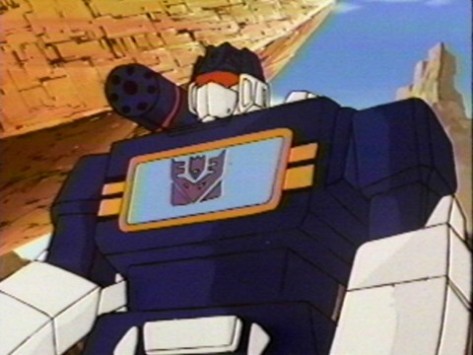
Characters come and go at a fast and furious clip, with respective leaders Optimus Prime (voice talent of Peter Cullen) and Megatron (voiced by Frank Welker) the central stars (and likely selling the most toys – I had a Prime in my toy box but no Megatron). In this weekly version of the series (with just 16 episodes), there isn't enough screen time to give each character its due; I found myself confused a couple times when one Autobot or the other would play a central role in an episode, only to disappear for a similarly obscure character to take his place in another.

But some characters get more screen time and stand out: Bumblebee (voiced by Dan Gilvezan), the cute Volkswagen Beetle who becomes friends with human buddies Spike and Sparkplug; Ironhide (also voiced by Peter Cullen), a red van and a grizzled, battle-tested lieutenant who's seen his share of battles; and Jazz (voice talent of Scatman Crothers), the cool, jive talkin' Porsche. On the Decepticon side, fighter jet Starscream (voiced by Chris Latta) steals most scenes he's in as Megatron's second-in-command, a weaselly backstabber waiting for his opportunity to take over Decepticon leadership (in a hilarious line reading, replying to an underling's plea for the safety of their human slaves: "The puny flesh creatures are insignificant."); and Soundwave (also voiced by Frank Welker, sounding like he's speaking through a box fan), the militant, loyal soldier who transforms into a boombox, complete with "cassette tapes" that transform into mini-characters (one of these tapes, Rumble, is memorable as a smartass villain with short-man syndrome).
Other voice actors include Casey Kasem (of course), Michael Bell, Ken Samsom and Don Messick, all popular voice artists on many children's productions at the time. Cullen and Welker revived their voice roles in the live action Transformers movie franchise, as Optimus Prime and Megatron, respectively.

A curious discovery as an adult all these decades later is learning how some of the episodes were originally aired out of order, screwing up the continuity. While Shout! Factory remedied this by placing the episodes in their proper story order on the DVD set, you get the feeling that Sunbow and Hasbro bumped up (or down) a few airdates to showcase certain characters in order to sell toys (it's no coincidence these date changes happened around Thanksgiving and Christmastime). Take Skyfire for instance, a jumbo Autobot jet/space shuttle…in the original airings, his origin story, Fire in the Sky, was bumped back a month-and-a-half, replaced by S.O.S. Dinobots, the origin story of the Dinobots, a team of Autobots who transform into dinosaur-shaped robots.

The out-of-order airings in 1984 inadvertently introduced Skyfire as if he was part of the team BEFORE his origin episode aired. (Nice work, guys! I know, I know…had to move those Dinobots off the shelves at Toys 'R' Us). The fact that Skyfire was one of four "special" Transformers to get an origin story appears to indicate a conscious decision from the powers-that-be that this toy would be a large seller. At least, that's how it appears they were playing it; he was larger than most the other toys in the line, a selling point not lost on 80s toymakers as the decade wore on.

I wasn't a fan of the Dinobots as a kid, and I didn't recall their introduction coming so early in The Transformers' run, but I get their appeal now. Dinosaurs have long been a source of wonder for youngsters of every generation, so it's only smart the producers chose to shoehorn in some sort of dinosaur characters (Playthings magazine named the Dinobots one of the best-selling toys of 1985). I was clearly in the minority in my distaste for the Dinobots (I was all about cool cars and sleek jets; dinosaurs didn't resonate with me as much as they did other kids), but I appreciate the genius behind pulling in that large segment of kids who were thrilled to have dinosaurs that transformed into robots!

Intrigued after finding ancient remains buried next to their headquarters' crash site, the Autobots create Dinobots Grimlock, Slag and Sludge in the origin story, S.O.S. Dinobots, and they're immediately played for laughs, portrayed as dimwitted oafs, resembling the perception of a real dinosaur's intelligence level. Sticking out like a sore thumb to me in '84 was that…the Transformers took the guise of Earth-bound vehicles for disguise. That was their SOLE reason for transforming into vehicle forms. So, how on Earth (pun intended) is it a good idea to have robots whose "disguise" in "vehicle" form is that of a prehistoric, now-extinct dinosaur made of metallic, shiny silver and gold metal? A couple episodes later, in War of the Dinobots, two more Dinobots are created, Snarl and Swoop, bringing the total to five. Re-watching these episodes as an adult allows me to cut some slack to the writers; by this time in the storyline, humans in the series are quite aware of the existence of Autobots and Decepticons, so the "need" for a clever disguise isn't as important as I thought when I was eight (now there's some critical thought – see, I did learn something in school).

The Dinobots were clearly the most popular "specialty" items Hasbro was trying to market, with multiple episodes featuring the team being activated at the last moment to save the Autobots' bacon. Hasbro tried a similar tact on the Decepticon side with the introduction of the Insecticons, a team of giant robot insects introduced in A Plague of Insecticons, the last-aired episode of the season. However, in the episode Heavy Metal War, produced and intended to be the season finale, we're introduced to the Constructicons, the first of one of the coolest ideas the toy line came up with – the "combiner." The team consisted of six Decepticons who transformed into various construction vehicles (a dump truck, concrete mixer, excavator, etc.) and, when the time came, they all combined to form the giant robot Devastator – the ultimate Decepticon. In time, the Autobots would form their own combiner teams and the Decepticons would spawn many more, but this first glimpse was a terrific way to end the season (and sell lots more toys), even if the end of Heavy Metal War is a bit of a letdown.
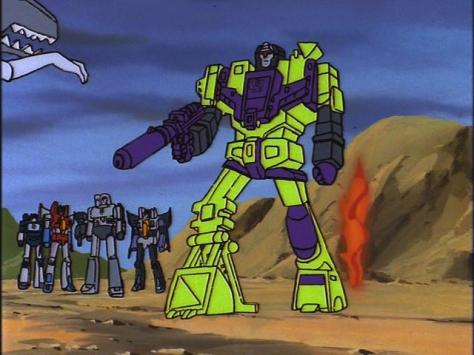
Hasbro had to fast-track the Transformers toy line in 1984, beaten to the punch in American stores by Tonka's Go-Bots, a similar line of transforming robots with heroic and evil factions waging a similar war against each other. Legendary cartoon producer Hanna-Barbera produced Challenge of the Go-Bots, which began airing a 5-part miniseries just nine days before The Transformers 3-part premiere miniseries aired. Challenge of the Go-Bots would return with 60 additional episodes in daily syndication a year later, in the fall of '85, but the writing was on the wall; the one-two punch of Hasbro's superior marketing and Sunbow's more mature, anime-influenced take on the cartoon eventually wore down the Go-Bots (it's no wonder both Kenner and Tonka would be gobbled up by Hasbro just a few years later).
So, was The Transformers cartoon a success? Did it sell truckloads of toys and entertain millions of youngsters? I'd say yes to all; it was a resounding success…and fun, cheap thrills for toy sales is all the show set out (and needed) to do. This short first season set the stage for the franchise it would eventually become. In many ways, future seasons weren't able to capture the same magic as the onslaught of new toys/characters continued, watering down the concept to diminishing returns. But now, it's easy to see why these original Transformers characters from 1984 are the backbone of the modern film franchise (who would've guessed it would have such a long-tail legacy culminating in live action films, something we dreamed about in 1984, but thought would never be possible?).
Mankind has always been at war. Is it just human nature? I don't know the answer…but it's fitting that a race of sentient robots, also at war on their home planet, would somehow, some way, crash land right here on Planet Earth.
Click to purchase The Transformers: The Complete First Season at Amazon.

Your purchase helps us pay the bills at this website!
Here are thoughts on the 16 first-season episodes of The Transformers, which aired in the fall of 1984. (Or, if you prefer, the 3-part miniseries & 13 season 1 episodes – all included on Shout! Factory's Complete First Season DVD collection.)
More Than Meets the Eye, Part 1 (September 17, 1984)
A civil war rages on the planet Cybertron, leading to a drought of energy sources. A team of Autobots, led by Optimus Prime, set out on a mission to find new energy sources, but when Decepticons challenge them in space, both space ships crash thanks a meteor storm, stranding all on the planet Earth, where the robots are reactivated 4 million years later. Decepticons look to convert Earth's resources into energon to take back to Cybertron; the Autobots must stop them. Fun, busy opening outing introduces a wide range of characters, prompting kids everywhere to immediately hit up their local Toys 'R' Us & Kay-Bee stores.
More Than Meets the Eye, Part 2 (September 18, 1984)
The battle rages on in part 2 of this 3-part opening miniseries, with young human Spike & his father, Sparkplug, deepening their knowledge of the Autobots & Cybertron (as they learn the backstory, so do we). Meantime, the Decepticons are making good on their plans to steal & convert Earth's resources into energon cubes for transport back to energy-depleted Cybertron. Prime & the the gang track them down to a mine in hopes of planting a bomb to that will bury the Decepticons forever. Of course, making the plan work won't be easy.
More Than Meets the Eye, Part 3 (September 19, 1984)
The Decepticons make their final play for Earth's resources, boarding their now-repaired shuttle for the return trip to Cybertron where they plan to rule the planet while leaving Prime & the Autobots stuck on Earth. The Decepticons lift off & successfully thwart a last-ditch effort by Prime to stop them, but a smart-thinking Autobot manages to give the good guys one last fighting chance. Surprisingly well-plotted final part of the series-opening trilogy, written by Arthur Bloom. Less than a month later, 13 more commissioned episodes began airing weekly on Saturday mornings.
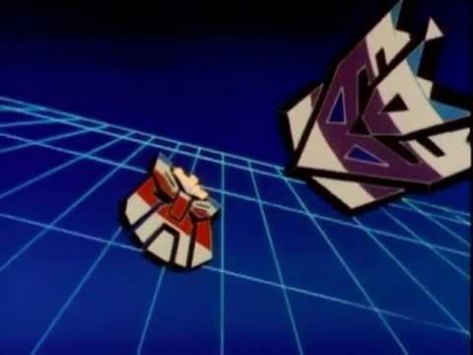
Transport to Oblivion (October 6, 1984)
Turns out, the Decepticons weren't down for the count following the opening miniseries, & Megatron is briefed by Shockwave (who Megatron placed in charge of Decepticons on Cybertron when he departed) on their home planet's waning energy supply, prompting Megatron to make another run at turning Earth's resources into energon, this time ordering the construction of a "Space Bridge" to transport the cubes back to Cybertron. Bumblebee & Spike stumble onto the Decepticons' plan, but they're no match for Megatron & his minions when they're snuffed out. Decent opener to the weekly series. Especially fun is watching Starscream establish early on that he believes he should be leader of the Decepticons, constantly challenging Megatron's authority. The animosity between the two foreshadows events to come in later seasons & 1986's Transformers: The Movie.
Roll For It (October 13, 1984)
With Megatron stuck on Cybertron, Starscream takes his first shot at leading the Decepticons, with no more success than Megatron had. Things get serious when Megatron returns & steals an antimatter formula created on Earth (it was memorized by wheelchair-bound human genius, Chip) that boosts his power & enables him to wreak serious havoc. In other words, Megatron is basically using atom bomb technology! Dang, Transformers; this is heavy sh*t!
Divide and Conquer (October 20, 1984)
A large-scale Decepticon attack leaves Prime clinging to life. Wheeljack can fix him, but not until he transports through space to Cybertron with a team of Autobots & human genius Chip in tow to snag the Cosmotron unit, the needed spare part. An episode-ending 1-on-1 battle between Megatron & newly refurbished Prime sets the stage for many similar battles in the years to come.
Fire in the Sky (December 8, 1984)
Who knew Global Warming was a thing in 1984, and that a team of evil robots from outer space were behind it? When the Decepticons cause winter-in-July by siphoning heat from the Earth's core to convert to energon, they inadvertently stumble upon long-lost Transformer Skyfire, a former Cybertronian scientist buddy of Starscream's from back in the old days who crashed millions of years ago on Earth during a reconnaissance mission. The powerful jetfighter (I can't decide if he's a large jet or a small space shuttle) must ultimately decide who to align with – Decepticons or Autobots. Enjoyable episode, with Cliffjumper continuing to amuse as the Scrappy-Doo of the bunch, looking for a fight & always getting his ass kicked, & Starscream continues with the memorable one-liners ("The puny flesh creatures are insignificant," he tells an aghast Skyfire.) Also of note is the seriousness of the episode, as The Transformers shows its willingness to explore the death of a character. (This is the first of a number of episodes that aired out of order, for whatever reason (not as many sh*ts were given in the 80s, that's for sure). Shout! Factory, thankfully, placed the episodes in their proper story order for DVD, which is how I viewed them.)
S.O.S. Dinobots (October 27, 1984)
And maybe this is why the previous episode was held back – Hasbro wanted to get their Dinobots on the toy shelves, so they could move that product before the holidays! When the Autobots discover ancient dinosaur remains buried in the mountain alongside the "Ark" (their crashed spaceship/headquarters), they're naturally intrigued & set about creating transforming robot versions of the extinct Earth creatures. Fairly silly characters, all brawn with no smarts, after a dangerous test run sees them deactivated, they wind up the Autobots' only hope when Megatron enslaves & drains the Autobots' power. Some funny bits in this one include Rumble's insult to the Autobots as he flies through the air, avoiding their lasers: "Nice shooting, if you're aiming at the sky!" It's laugh-out-loud worthy anytime Megatron drops to a knee after taking on Autobot fire…because when Starscream spots his illustrious leader on the ground he immediately declares, "Megatron has fallen! Starscream is your new leader!" just before he gets blasted out of the sky himself. And lastly, pay not-so-close attention when Shaggy Bluestreak (voiced by Casey Kasem) cracks a joke about Hound & laughs it off; Kasem's delivery is pitched exactly like his Shaggy delivery on Scooby-Doo, & the animators even give Bluestreak those "shaky shoulders" you associate with Scoob & the gang when they're standing around laughing.
Fire on the Mountain (December 22, 1984)
Megatron scours the Andes in search of the Crystal of Power, an ancient weapon capable of mass destruction, so the Autobots call in some extra help – Skyfire returns from the dead (that was easy)! Was nice to see lesser-used Autobot characters Brawn & Sideswipe featured prominently in this outing. Megatron proves not even political correctness will stop him from ruling the universe when he calls Brawn a midget. This is another episode that aired out-of-order, held until December of '84, re-inserted to its proper storyline place in Shout!'s DVD release. Interestingly, both of the "held" episodes featured Skyfire as the guest star. It's obvious toymaker Hasbro & the producers saw the Dinobots as potentially hot-selling commodities, so they fast-tracked the episodes featuring them, bringing us to….
War of the Dinobots (November 24, 1984)
When the Decepticons set their sites on a meteorite that contains an unknown amount of energy, Optimus Prime assigns Dinobot trio Grimlock, Slag & Sludge to guard it. But Megatron learns the Dinobots' weaknesses & turns them against the Autobots. Thankfully, the Autobots had already set about creating two new Dinobots (because there have been no problems with that first batch, right?) – Snarl & Swoop, who enter the fray & help the Autobots battle the re-wired Dinobots & Decepticons.
The Ultimate Doom, Part 1: Brainwash (November 3, 1984)
The Decepticons enlist nefarious earthling scientist Dr. Arkeville to help turn humans against the Autobots. Their master plan: bring Cybertron to Earth by somehow transporting the planet into Earth's orbit so it can suck all of Earth's energy up. Prime & the Autobots must make a decision; do they salvage their home planet or save the new one they now inhabit? As a human, I know which one I hope they choose!
The Ultimate Doom, Part 2: Search (November 10, 1984)
Crap, what's that in the sky? It's another planet! Cybertron now orbits the Earth, wreaking wind & rain havoc, among other natural disasters that have the (un)fortunate effect of creating energy for the Decepticons to package. With an army of hypnotized human slaves (via a "hypno-chip"), Megatron seeks to rebuild Cybertron while Spike recruits a small team of Autobots to head to Cybertron, landing them inside Decepticon HQ. The Dinobots are also activated for duty in this outing.
The Ultimate Doom, Part 3: Revival (November 17, 1984)
This is it – the final battle (hehe, right…) between the Autobots & Decepticons, the final piece of The Ultimate Doom 3-parter. With Cybertron orbiting Earth, Megatron whips up a tidal wave to power a plant that turns the energy into energon cubes. An Autobot team on Cybertron led by Spike, Wheeljack & Bumblebee seek to un-slave the humans under Megatron's spell, while Autobots on Earth led by Optimus Prime look to stop the Decepticon tidal wave scheme, literally surfing toward Megatron's power plant, trying to outrun the tidal wave (again, why do these Autobots insist on staying on surf boards instead of simply flying away from danger?). Ultimate question: Can the good guys save humankind & knock Cybertron out of Earth's orbit?
Countdown to Extinction (December 1, 1984)
With Megatron thought dead, Starscream takes over, hatching a plan with human Dr. Arkeville to destroy Earth while bottling the energy from the explosion. Fun to see the leaders of good & bad team up at the end to fight the ultimate enemy: death. This is where The Transformers, unlike most children's fare (or even adult's) at the time, could have shown some serialization. But of course, powers-that-be aired the episodes out of order. This was the natural successor to the The Ultimate Doom trilogy, even sporting an opening narration describing the events of what happened in those previous episodes. But when originally aired, it was sandwiched around the Dinobots introduction episode. (Thankfully, again, Shout! placed them in proper order on DVD.)
A Plague of Insecticons (December 29, 1984)
On the island of Bali, a new kind of Decepticon is discovered – the Insecticons (Shrapnel, Bombshell & Kickback), a group of robots who crash-landed on Earth before the main Decepticons did over 4 million years ago (well, 4 million years before 1984). An ancient breed of Decepticons, Megatron hopes partnering with them will strengthen his team & bring about the end of the Autobots. With no Earth-bound technology to model their "disguise" on (such as cars, planes, etc.), I reckon insects must have been the first thing they saw. The Insecticons would've made a natural foil for the Dinobots, but the Dinos don't appear in this outing. A pretty good episode though, with the Insecticons coming across particularly creepy & scary when attacking humans on "Demon Swamp" in the opening moments. (This was the last season 1 episode to originally air, serving as the season finale, even though it aired out of story order. What should have aired as the finale is the episode below.)
Heavy Metal War (December 15, 1984)
This is it…the final go-round between the Autobots & Decepticons (or is it?). Megatron lures Prime into a 1-on-1 fight as a ruse to distract the Autobots while a new team of Decepticons, the Constructicons (Scrapper, Bonecrusher, Scavenger, Mixmaster, Hook, & Long Haul), drill through the earth under Autobot headquarters on a mission to destroy Teletraan-1, the Autobot supercomputer. A good build-up to monster villain Devastator (a gigantic robot that forms when the 6 Constructicons combine), who's able to handle the Dinobots with ease, but a rushed ending doesn't give us the scary, harrowing resolution we want to see; the Autobots are able to break up the multi-part beast with one laser blast. Devastator was the first in a long line of future "combiners," a boon for toymaker Hasbro, which created many for both the Decepticon & Autobot sides.

Source: https://drunktv.net/2018/05/23/the-transformers-season-1-1984-animated-tv-series-review/
0 Response to "Which Trabsformers Cartoon Continues From Bay Universe"
Post a Comment